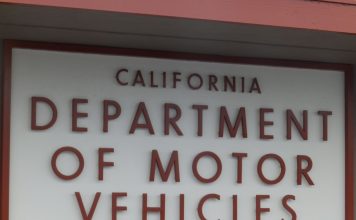Q:
How did Gilroy’s Redwood Retreat Road get its unusual name?
A:
Located just off Watsonville Road a couple of miles from Hecker
Pass, Redwood Retreat Road is one of the most scenic country drives
in South Valley.
Q:
How did Gilroy’s Redwood Retreat Road get its unusual name?
A:
Located just off Watsonville Road a couple of miles from Hecker Pass, Redwood Retreat Road is one of the most scenic country drives in South Valley. It meanders at the base of the Santa Cruz Mountains, and is the location for hidden gem wineries Martin Ranch and Fernwood Cellars.
The road’s name comes from the fact that there once was a popular summer getaway that thrived at the far end. Called Redwood Retreat Resort because it was set among the towering redwood trees of Mt. Madonna, the Victorian vacation spot was built by farmer Charles E. Sanders who had homesteaded the property since coming to the South Valley in 1863. He and his sons Wilburn and Irville finished completing the resort in 1891. The facilities included a fine hotel and several cabins along with a swimming pool and tennis courts.
Families from San Francisco traveled to Gilroy’s train depot and Sanders would meet them with his horse-drawn wagon. The guests would enjoy the nine-mile ride to the resort and stay in simple wood cabins with primitive accommodations such as candles or kerosene lamps for light, and water pitchers and bowls to wash up in. The families would play in Little Arthur Creek which runs through the property or go for hikes or horseback rides along mountain trails.
Q:
Who was Hazel Hawkins and why did Hollister name its hospital after her?
A:
Hazel Hawkins was the granddaughter of Thomas Hawkins, a patriarch of the town of Hollister. He was involved in the development of the community. In the 1870s, he played an important role in making sure that the Southern Pacific railroad made the farming village the destination of a branch line it was building. (The railroad first planned to have its line end at San Juan Bautista). Hawkins formed the Bank of Hollister and grew wealthy from operating that financial institution as its presidents for many years. He also stayed active by forming the Hollister Water Company, the Hollister Gas Company, and the Hollister Warehouse Company which became lucrative enterprises under his management.
His son Winfield married and the couple produced a lovely girl they named Hazel. Hawkins adored his grandchild and nicknamed her “Little Sunshine.” Unfortunately, sadness struck the family on March 5, 1902, when at age 9 the girl died from appendicitis.
Hawkins believed Hazel might have lived if the community of Hollister had only had a hospital facility where she could have received proper medical care. Spurred by his grief, he decided to give the town the gift of a hospital that would be named in honor of his beloved granddaughter.
Hazel Hawkins Memorial Hospital was built on the corner of Monterey and Hawkins streets at what was then the outskirts of the town. It was opened on Nov. 13, 1907. During the grand opening ceremony, Hawkins described the origin of the new facility. “I do not even claim the conception of this work. It is said in holy Writ: ‘And a little child shall lead them.’ So from the beautiful and unselfish life of the little girl whose name adorns these portals, came the inspiration for all that has been done.”
As Hollister’s population grew, the city found it needed a large medical facility. In 1962, a new hospital was built in the southern section of the community. It retained the named Hazel Hawkins Memorial Hospital.
Q:
Who was San Martin and was a South Valley town named after him?
A:
If it wasn’t for an exploding steamboat, the village of San Martin might never have come into existence. On April 11, 1853, the boilers of the 61-ton side-wheel steamboat Jenny Lind exploded. Among the 34 killed was Bernard Murphy, son of South Valley pioneer Martin Murphy, Sr.
The elder Murphy provided four acres of his ranch land to build a small chapel with an accompanying cemetery to bury his son. He named the little church San Martin in honor of his patron saint, Saint Martin of Tours in France. Over time, a village grew in the area that took on the name of the church.
As for Saint Martin himself, he was a Christian bishop who was born in what’s now Hungary in the year 316. He served in the Roman army and when his regiment was sent to Amiens in Gaul, he famously gave his cloak to a half-naked beggar at the town’s gate one cold winter day. Nov. 11 is the feast day of Saint Martin – or San Martin, as he is called in Spanish.










